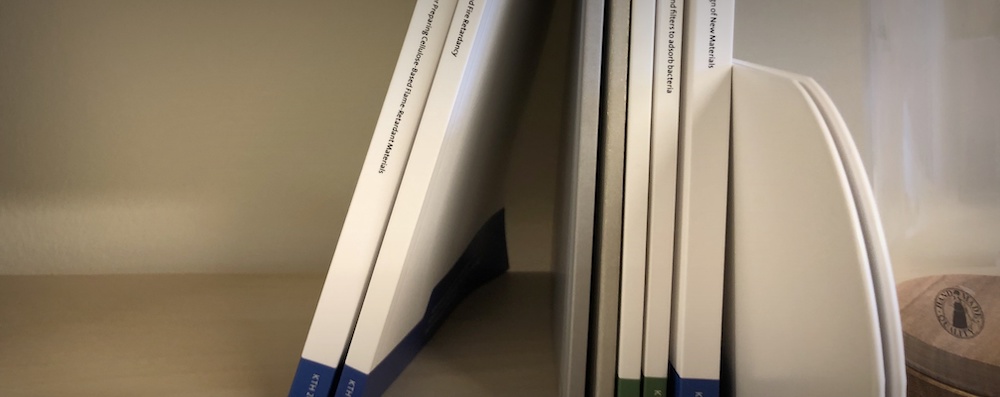
Defence of doctoral thesis: Johan Erlandsson – Controlled assembly and functionalisation of cellulosa-based materials
KTH
Opponent: Mikael Lindström, RISE Bioeconomy
Supervisor: Lars Wågberg, KTH
Co-supervisors: Per Larsson, KTH and Hjalmar Granberg, RISE Bioeconomy
Welcome to take part of the thesis defense at KTH or follow the presentation online on this page.
Abstract
The environmental effects caused by the use of fossil-based resources have intensified and driven society and research towards new materials and processes that utilise renewable resources. Within the development of new materials, wood has been identified as a raw-material from which high performing materials can be derived. One such material is cellulose nanofibrils (CNFs) which are capable of replacing several currently used fossil-based materials. However, for CNFs to exhibit the required material properties they need to be chemically or physically modified. This means that the properties of the CNFs can be specifically adapted to fit the demand in particular areas, for example electrical energy storage. In these applications it is the mechanical properties; the large, easily functionalised surface and ability to be moulded into 3D shapes that make CNFs a highly interesting raw material.
This thesis explores the formation and functionalisation of CNF- and fibre-based materials and their novel use in applications such as energy storage. The wet stability of the materials was achieved by crosslinking and ice templating the fibrils by a novel freezing procedure, which makes it possible to avoid the use of freeze-drying and subsequent crosslinking. Using colloidal probe atomic force microscopy adhesion measurements, hemiacetals were shown to be formed between the aldehyde-containing fibrils when they are brought into molecular contact, for example during ice templating. Hemiacetal crosslinked aerogels have been shaped and functionalised to demonstrate their application as biomimetic structural composites, electrical circuits and electrical cells. In addition, crosslinked, light-weight 3D fibre networks were prepared with á similar chemistry by a self-assembly process of pulp fibres. These networks could be dried under ambient conditions and the materials formed were wet-stable due to the hemiacetal crosslinks formed in the fibre–fibre contacts, which provided the networks with excellent mechanical properties and shape recovery capacity in water.
Finally, using a newly developed polyampholyte and mixing it with CNFs, heterofunctional composite films and aerogels could be prepared. By activating crosslinkable groups in these composite materials, they were able to undergo further water based chemical functionalisation. In this highly dispersed state, the composite could be irreversibly crosslinked by a hydrothermal treatment to create transparent, low solid content hydrogels.

